Introduction:
The aim of the FPC is to provide a phenomenological framework to the experimental searches for feebly-interacting particles. The framework is organized along three main directions:
1) Ultra-light FIPs (< 1 eV): this includes axion/ALP phenomenology, ultra-light Dark Matter candidates and connection to gravitational waves detectors and astroparticle/cosmology bounds.
2) Light (MeV-GeV) dark matter: this includes searches at accelerator-based experiments, direct detection experiments, including inputs from astroparticle and cosmology;
3) Right handed neutrinos in low-scale seesaw models and their connection to active neutrino physics.
The current FPC results are based on the "portal formalism" described in detail in https://arxiv.org/pdf/1901.09966.pdf (also published in J.Phys.G 47 (2020) 1, 010501) and updated in the FIPs 2020 Workshop Report: https://arxiv.org/pdf/2102.12143.pdf. They are divided in four portals: Vector, Scalar, Pseudo-scalar and Fermion. The following plots represent the state-of-the-art of the searches and projections worldwide. These plots will evolve following the fast experimental and theoretical progress.
For any comment on the plots, please contact: Gaia.Lanfranchi@lnf.infn.it, mpospelov@perimeterinstitute.ca.
Results related to the light (MeV-GeV) DM and related mediators:
1. Vector portal: Dark Photon into visible final states.
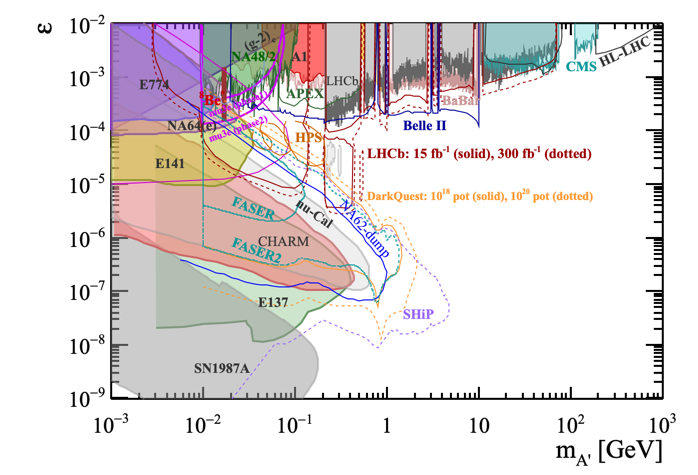
2. Vector portal: Dark Photon into invisible final states (elastic scalar dark matter). In this mass range a dark photon can be a mediator between DM and SM, and be produced in the Early Universe by direct DM annihilation.
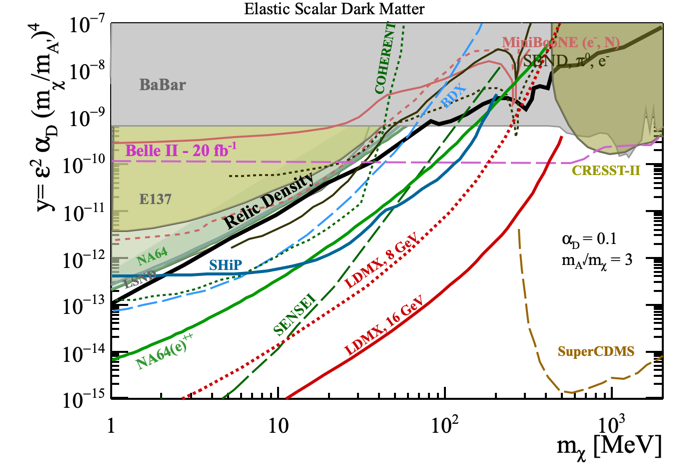 3. Vector portal: Dark Photon into invisible final states (pseudo-Dirac dark matter). In this mass range a dark photon can be a mediator between DM and SM, and be produced in the Early Universe by direct DM annihilation.
3. Vector portal: Dark Photon into invisible final states (pseudo-Dirac dark matter). In this mass range a dark photon can be a mediator between DM and SM, and be produced in the Early Universe by direct DM annihilation.
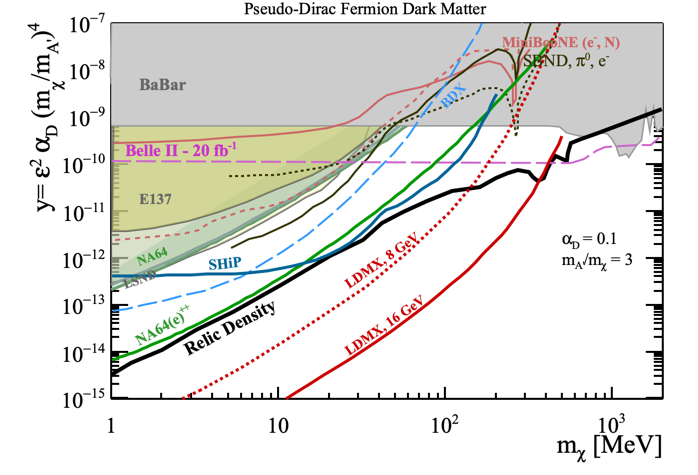
4. Scalar Portal: Dark scalar mixing with the Higgs and decaying to visible final states (range: 10 MeV - 50 GeV, zoom on the parameter space accessible at accelerator based experiments). In this mass range the dark scalar can be a mediator of DM and SM particles via secluded annihilation.
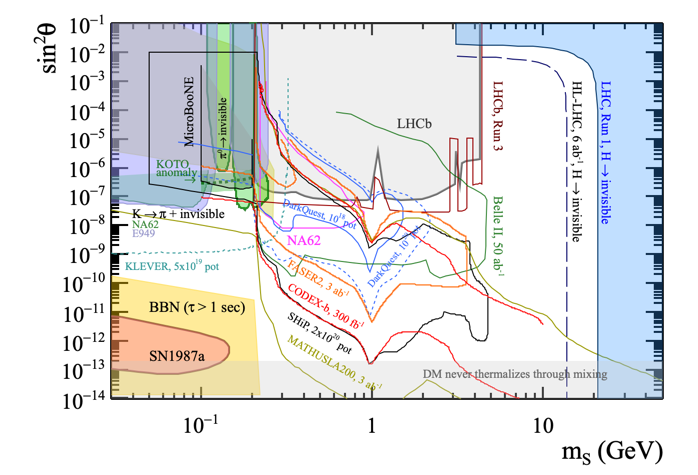
5. Extension of the Dark scalar mixing with the Higgs and decaying to visible final states down to 1 eV massess, zoom on the parameter space accessible through astro/cosmo measurements.
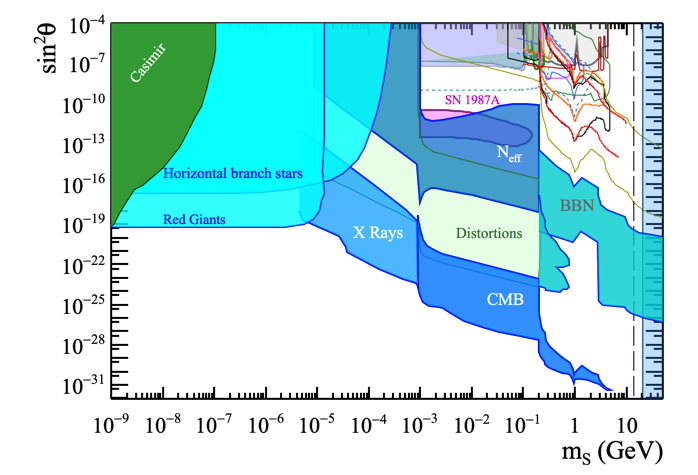 Results related to ultra-light FIPs:
Results related to ultra-light FIPs:
1. Dark scalar mixing with the Higgs with mass down to range: 10-22 eV, zoom on the parameter space accessible through measurements of the equivalence principle and GW detectors.
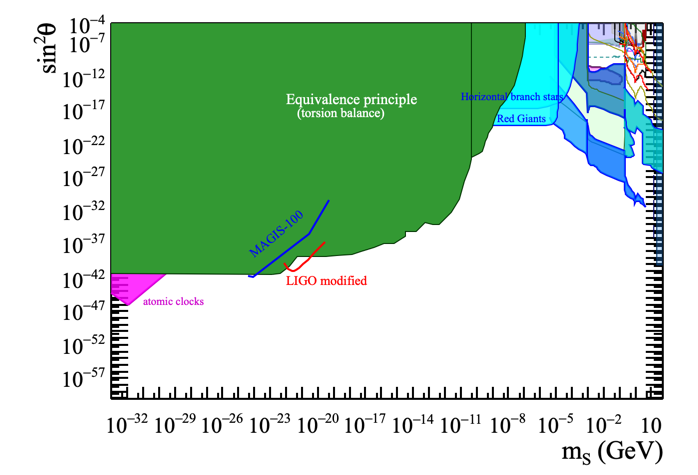
2. Axions/ALPs with photon coupling: range 10-11 eV - 1 GeV. The red box in the top-right corner shows the region accessible at accelerator-based experiments. Blue-ish zones are those accessible via stellar constraints. Green-ish zones are bounds from cosmology.
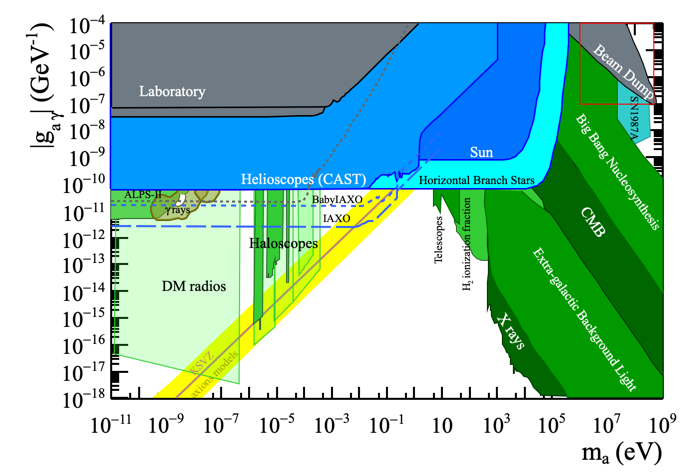
3. Dark photon as a ultra-light Dark Matter:
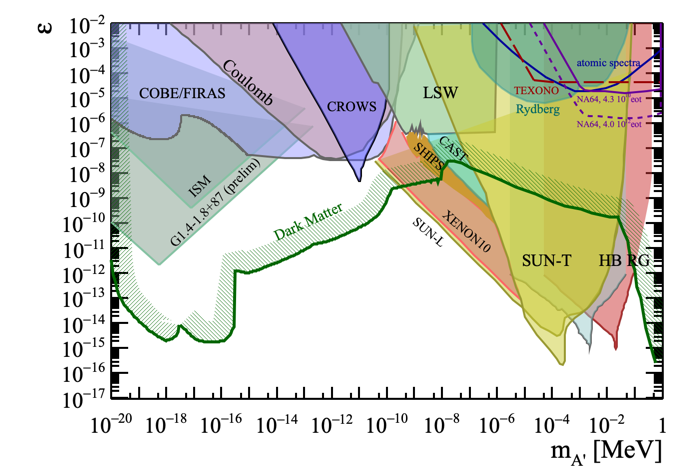
3. Dark photon as a ultra-light Dark Matter: zoom in the range accessible to Dark Matter direct detection detectors:
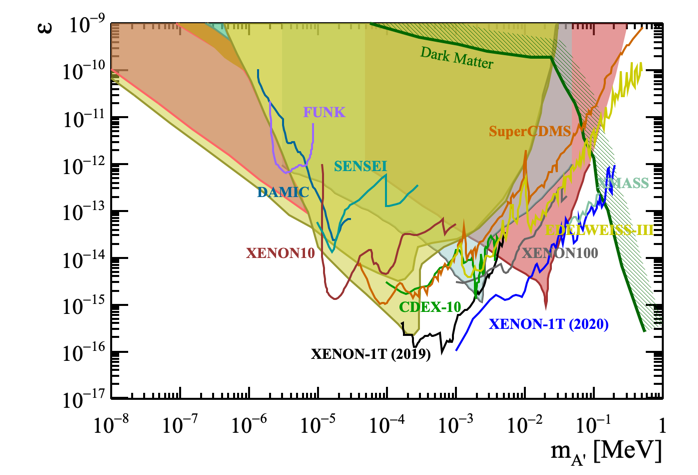
Results related to heavy axions/ALPs (MeV-TeV range):
1. Axions/ALPs with photon coupling: range 10 MeV - 2 GeV, accessible at fixed target, beam dump, and e+ e- colliders.
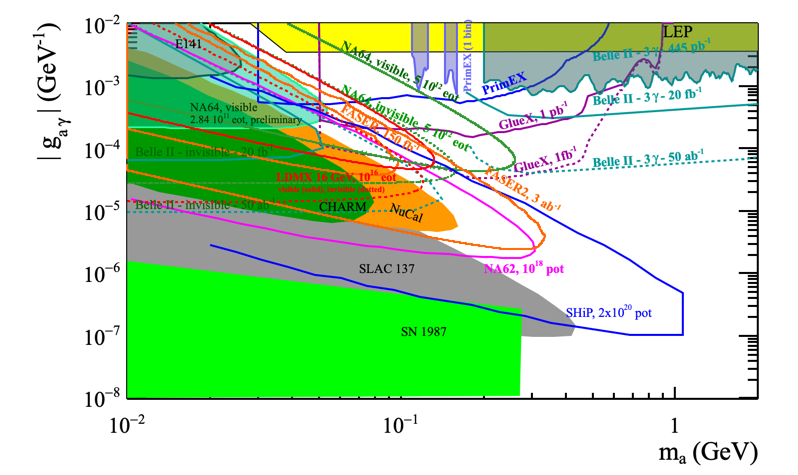
2. Axions/ALPs with photon coupling: range 10 MeV - 2 TeV, accessible at fixed target, beam dump, e+ e- colliders and pp colliders.
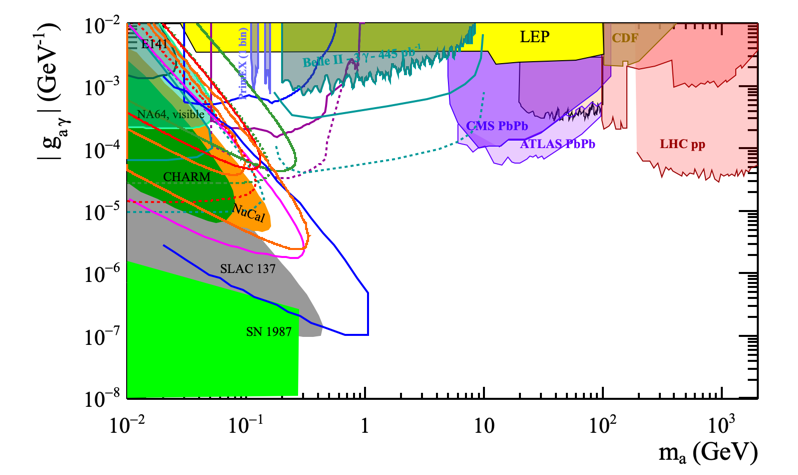
3. Results related to Heavy Neutral Leptons
1. HNLs coupled to the first lepton generation:
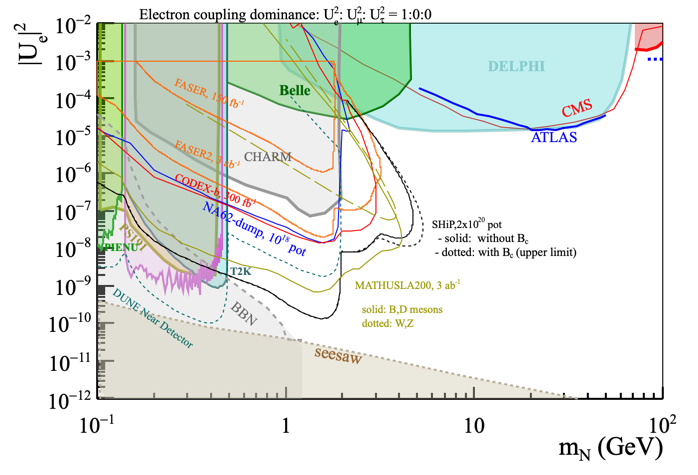
2. HNLs coupled to the second lepton generation:
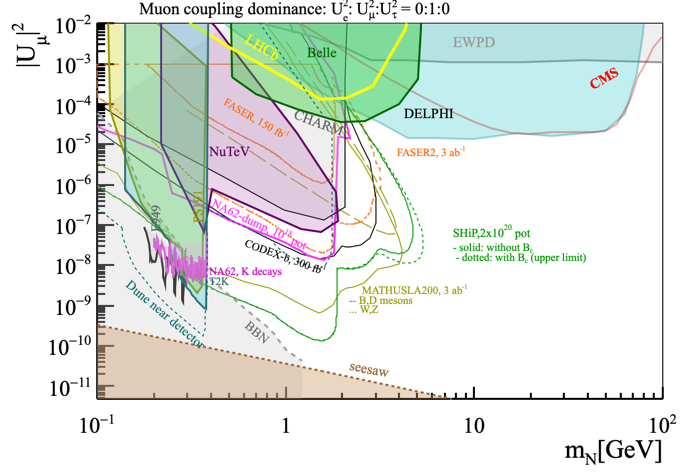
3. HNLs coupled to the third lepton generation:
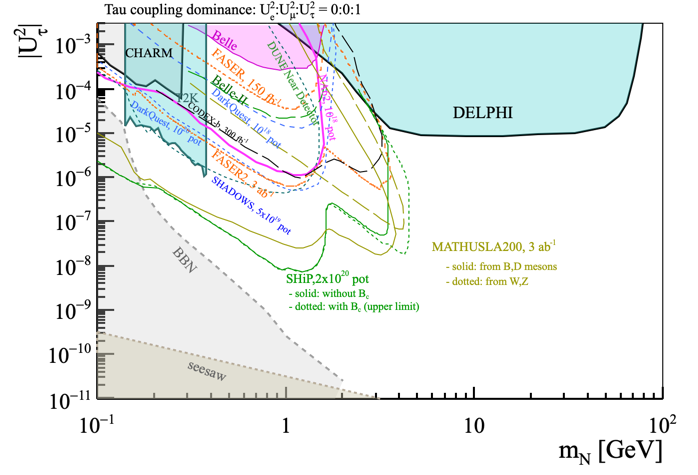
contact: Maxim Pospelov (mpospelov@perimeterinstitute.ca), Gaia Lanfranchi (Gaia.Lanfranchi@lnf.infn.it)
(page under construction)